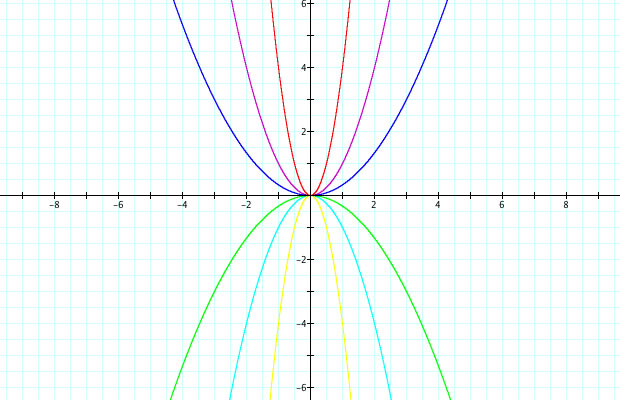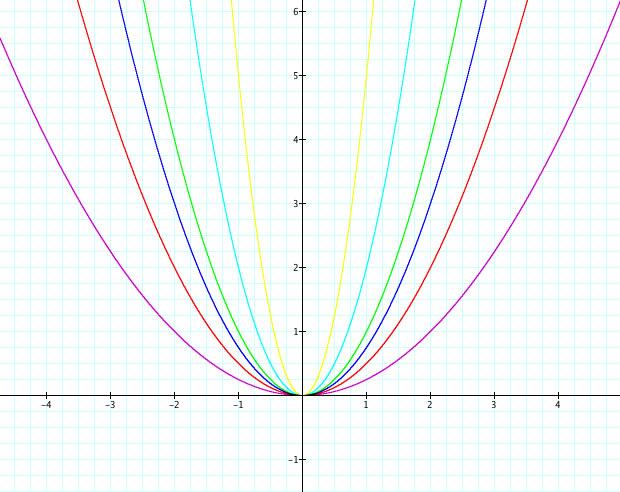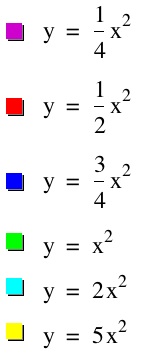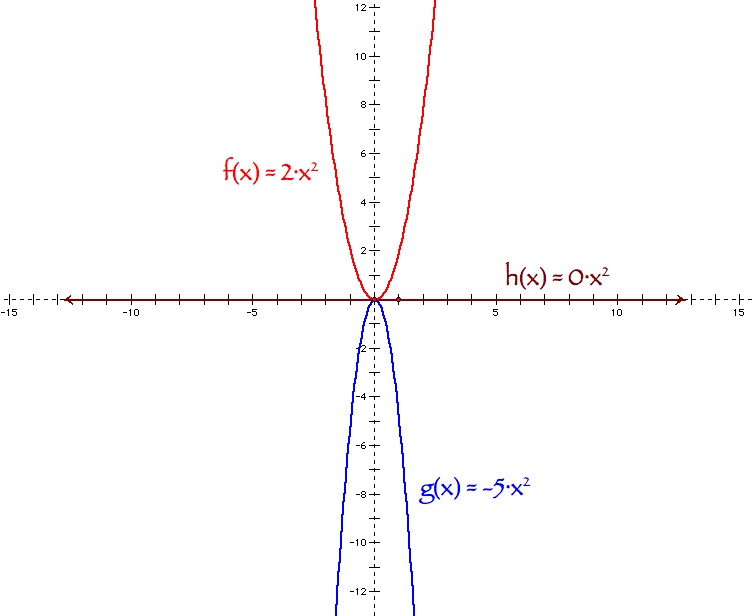

The Leading Coefficient of a Parabolic Function
by
Rob Walsh
The standard form of a function whose graph is a parabola is a second degree trinomial in the form y = ax2 + bx + c. If we let a, b, and c be rational numbers, we can observe what happens when these three parameters change (see gsp sketch of a parabola)
What we find is that the leading coefficient a plays some role in the "width" of the parabola and also determines in what direction it "opens." Let's now focus our exploration on these notions by allowing b and c to be zero. Hence, we have the equation y = ax2. Here are some examples:


Our first observation could be that the vertices of this set of parabolas lies on the origin. From our gsp sketch of a parabola, this is maintained as long as b and c both equal zero. We can also see above that when a > 0, the parabola is "opening up." Rather stated, there is first a decrease in the graph as it curves toward the origin and then an increase as it continues to curve upward in a positive manner. Let's explore this just a bit further.
In the equation, y = ax2, no matter what the value of x is, its square will always be positive. Therefore, the sign of a will always determine the sign of y. By plotting a few test points, we find that as long as y < 0, the points will be located below the x-axis, hence, forming a parabola that opens down. However, when y > 0, we find points located above the x-axis, rather, forming a parabola that opens up.
Let's now consider one more thing: the absolute value of x. For that, we look at a new set of possible equations. For now, we focus on values of a > 0.


We quickly observe that as a increases, the parabola becomes more narrow. The opposite happens when a decreases. We could see now how the parabola begins to open down as a becomes negative. The only thing left to consider is when a = 0, but that is hardly relevant, since when this occurs, we know longer have a parabolic equation. Instead, we get a line, namely, a horizontal line through the x-axis. Let's observe one more time (see gsp sketch II)...
